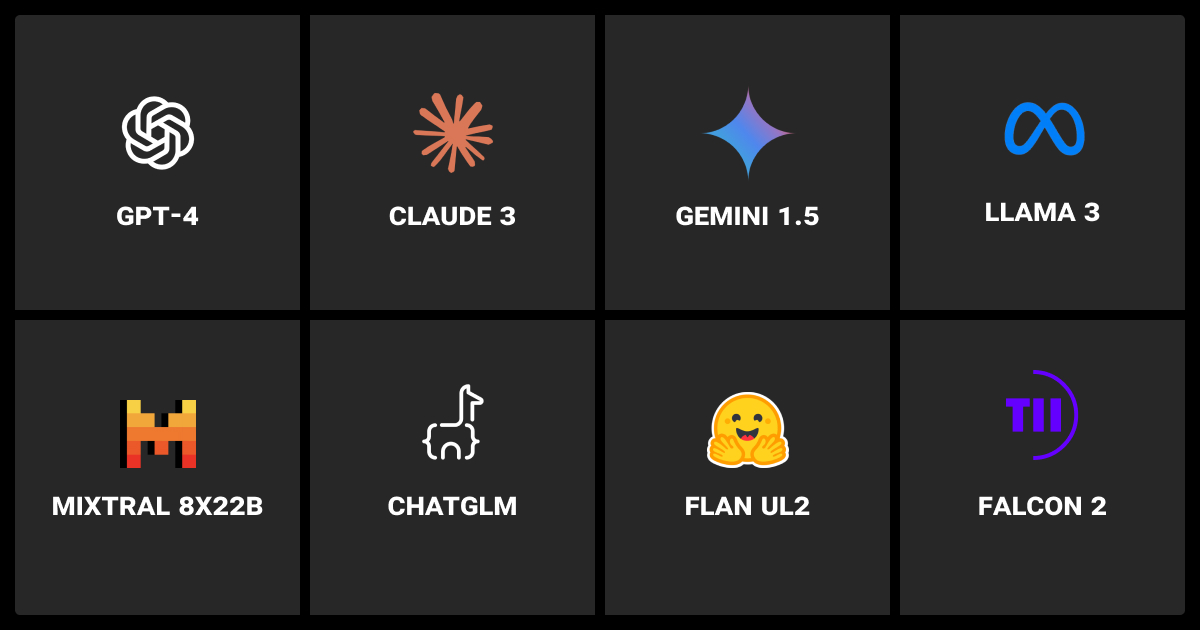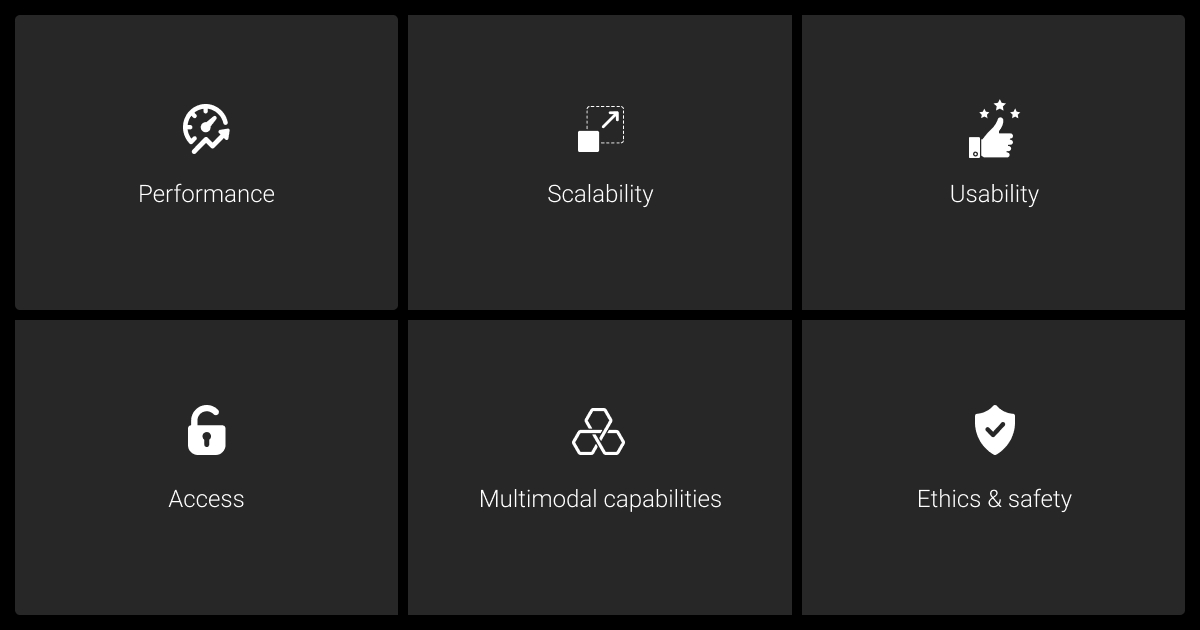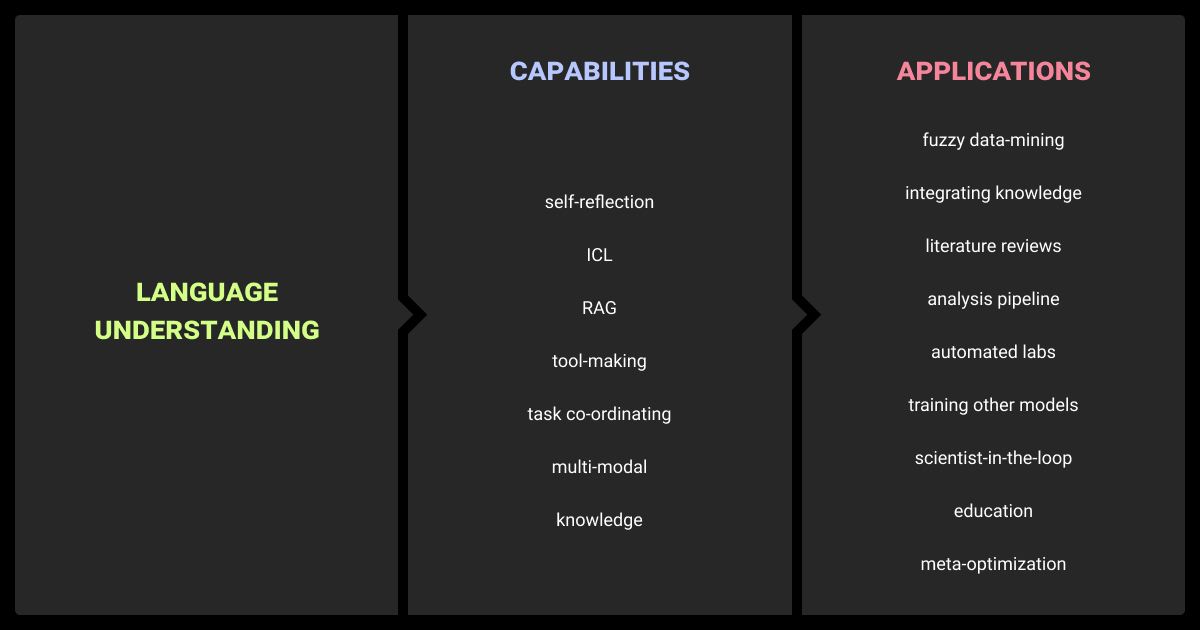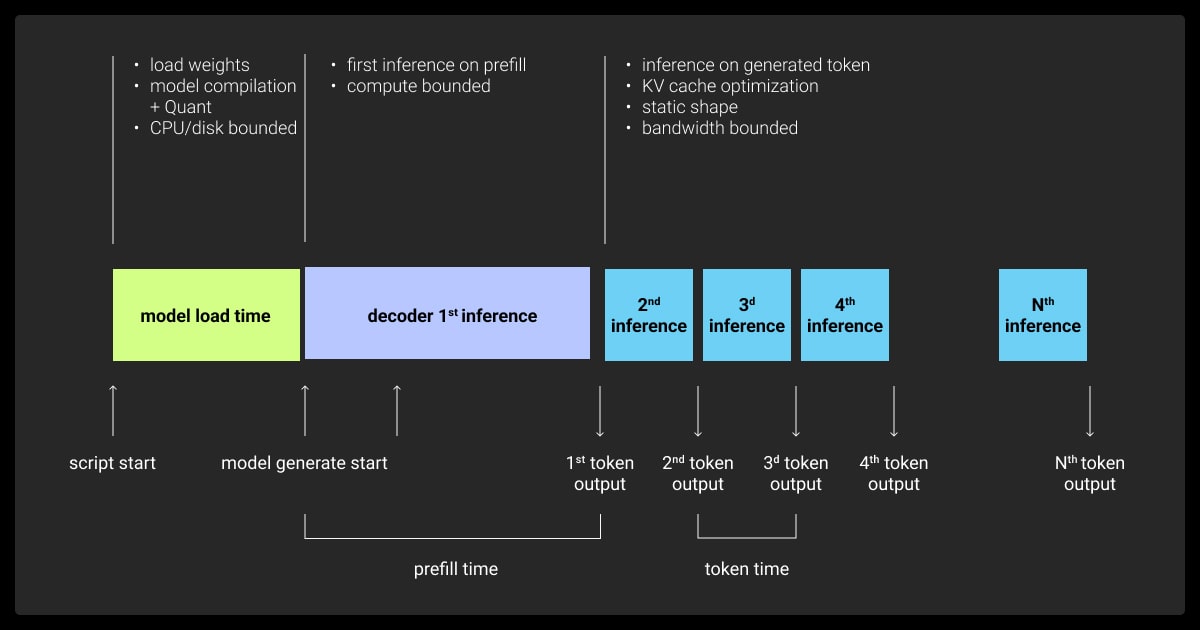Best Large Language Models: Overview & Performance

TL;DR
Key Evaluation Criteria for Choosing the Best Large Language Models

In 2024, large language models (LLMs) have advanced significantly, offering groundbreaking multimodal capabilities, scalability, and versatility across various industries. For those asking what are the best large language models, this article provides a detailed breakdown of top performers like GPT-4, Claude 3, and Llama 3.
Selecting the right LLM hinges on several critical factors that balance technical capability with practical application. For further development and integration, the following considerations are essential:
Performance and Scalability
Models like GPT-4 handle large-scale, complex tasks with ease thanks to massive parameter counts and extended context windows.
Usability and Access
How you access the model matters. Some models, like Claude 3, are API-based for easy integration. Others, like Llama 3, are some of the best free large language models, giving developers the freedom to customize and fine-tune them.
Multimodal Capabilities
Models like Gemini 1.5, which support seamless cross-modal integrations, can also complement technologies like automatic speech recognition, expanding their utility for applications such as transcription or real-time communication tools.
Cost and Flexibility
Budget-conscious developers might prefer efficient models like ChatGLM or Falcon 2, which deliver impressive performance without demanding significant resources. Open models like Llama 3 allow fine-tuning for niche industries without high licensing costs.
Ethics and Safety

For sensitive or customer-facing use cases, robust safety protocols and ethical safeguards are paramount. Collaborating with a data annotation company can enhance data quality, making models like Claude 3 reliable for enterprise-grade applications.
Overview of the Best Large Language Models
The LLM ecosystem offers models optimized for a wide range of tasks, from enterprise-scale deployments to specialized applications. The following categorization presents the best large language models based on access type, highlighting their strengths and ideal use cases to guide efficient selection.
Proprietary Models with API Access
Proprietary LLMs lead in performance and ease of integration, making them popular choices for enterprises.
GPT-4 (OpenAI)
OpenAI’s GPT-4 is the heavyweight champion of 2024’s AI scene, with an estimated 175 billion parameters and an extended 128,000-token context window. Its multimodal capabilities let it process text, images, and even audio, making it useful for everything from legal document automation to creative writing.
What sets GPT-4 apart is its versatility. Its adaptability has made it a cornerstone for industries requiring robust AI-driven automation. However, this capability comes at a premium cost, and its black-box architecture limits insights into its training and operational mechanics.
Key highlights:
Parameters: >175 billion.
Context Window: 128,000 tokens.
Strengths: Multimodal capabilities, API ecosystem, unmatched generalization.
GPT-4 performs well because it can handle complex, layered inquiries without losing clarity in its responses. It mirrors human intuition to some extent, making it easier to rely on for diverse applications across teams.
Claude 3 (Anthropic)
If safety and transparency are your priorities, Claude 3 delivers on both fronts. Designed with enterprises in mind, it handles up to 200,000 tokens, making it a top choice for document-heavy tasks like summarization or legal contract analysis. Claude 3’s focus on ethical AI practices ensures reliability, even in high-stakes environments. Its API offers significant tunability, allowing businesses to tailor it to their unique workflows.
Key highlights:
Context Window: 200,000 tokens.
Strengths: Safety-first approach, enterprise-grade reliability.
Claude excels in complex business scenarios. Its ability to maintain context and think step-by-step through intricate problems consistently delivers enterprise-grade results. We've seen a 40% improvement in our analysis workflow since adopting it.
Gemini 1.5 (Google)
Google’s Gemini 1.5 is the epitome of multimodal innovation, handling text, images, and video with ease. With a staggering 2-million-token context window, it redefines how LLMs process and interact with extensive data. What makes Gemini exceptional is its seamless integration with Google Workspace tools like Docs and Gmail, allowing businesses to augment productivity effortlessly.
Its use in creative projects, such as video script generation or visual data analysis, showcases its ability to operate across domains. Gemini 1.5 is accessible via Google’s Vertex AI, making it a practical choice for enterprises already invested in Google’s ecosystem.
Key highlights:
Parameters: 1.8B–3.25B+.
Context Window: 2M tokens.
Strengths: Multimodal innovation, Google ecosystem integration, enterprise productivity.
Best Open Source Large Language Models
For those seeking flexibility and transparency, open-source LLMs provide powerful alternatives to proprietary models.
Llama 3 (Meta)
Meta’s Llama 3 series is a game-changer in open-source AI. Available in 8B, 70B, and 405B parameter versions, it offers unmatched customization for developers and researchers.
Many startups are using Llama 3 to create cost-effective customer service tools or localized applications tailored to niche markets. Unlike proprietary models, Llama offers complete transparency, making it a favorite for those prioritizing flexibility over convenience.
Key highlights:
Parameters: 8B–405B.
Context Window: 128,000 tokens.
Strengths: Open-source flexibility, domain-specific fine-tuning, transparency.
Meta's Llama 3 stands out for its unmatched customization options, making it ideal for research, fine-tuned domain-specific applications, and personalized AI solutions. Its open-source nature gives it a clear edge in flexibility.
Falcon 2 (Technology Innovation Institute)
Falcon 2 delivers a punch with its 11 billion parameters, offering performance on par with larger models but at a fraction of the computational cost. Its Apache 2.0 license allows for commercial and research use, making it an attractive option for businesses. Designed for developers needing a balance between power and efficiency, Falcon 2 excels in tasks like text classification and summarization.
Key highlights:
Parameters: 11B.
Context Window: 8,000 tokens.
Strengths: Lightweight efficiency, commercial license, strong text processing.
Mixtral 8x22B (Mistral AI)
Innovation meets efficiency with Mistral Mixtral. This modular model splits its 141 billion parameters across subsystems, allowing it to run smoothly even on less powerful hardware. Despite its compact design, Mixtral outperforms many larger models on key benchmarks.
Ideal for lightweight applications, it’s often used in real-time scenarios like customer-facing bots or embedded AI systems. Mixtral’s efficiency opens up possibilities for deploying AI in resource-constrained environments.
Key highlights:
Parameters: 141B (split models).
Context Window: 64,000 tokens.
Strengths: Resource efficiency, real-time capabilities, modular design.
Specialized Models for Niche Applications
Models like Gemini 1.5 are designed to handle specific tasks, offering advanced capabilities in text, video, and audio processing. For instance, its multimodal framework can support tasks such as image recognition, making it suitable for applications like visual data analysis, product identification, or automated content tagging.
Code Llama (Meta)
Code Llama, ranging from 7B to 70B parameters, Code Llama shines in programming tasks like debugging, code generation, and translation. It’s a favorite among developers for its accuracy across multiple programming languages.
For instance, Code Llama can suggest optimizations for Python scripts or generate boilerplate code for Java applications. It’s an indispensable tool for streamlining software development workflows.
Key highlights:
Parameters: 7B–70B.
Context Window: 16,000 tokens.
Strengths: Programming tasks, multi-language support, code optimization.
ChatGLM (Tsinghua University)
ChatGLM is the go-to for multilingual applications. It supports both English and Chinese, making it perfect for bilingual customer service bots or global e-commerce platforms.
Key highlights:
Parameters: 6B.
Context Window: 32,000 tokens.
Strengths: Multilingual support, cost-efficiency, localized AI solutions.
FLAN UL2 (Google)
FLAN UL2 specializes in logical reasoning and Q&A systems. Its encoder-decoder architecture makes it great for academic research, summarizing long documents, or tackling dense data sets. Researchers frequently use FLAN UL2 for academic projects, where accuracy and explainability are paramount. It’s also a favorite for summarizing long, complex documents into digestible insights.
Key highlights:
Parameters: 20B.
Context Window: 16,000 tokens.
Strengths: Logical reasoning, academic research, data summarization.
Use Cases and Comparative Insights of the Best Large Language Models

Large language models in 2024 offers solutions tailored to the diverse needs of LLM engineers, ML teams, data scientists, and AI companies. Choosing the right model depends on your goals, from building scalable systems to crafting niche applications.
Below, find a comprehensive comparative table to guide your selection process.
Best LLMs to Build Scalable AI Systems

Proprietary models like GPT-4 and Claude 3 are ideal for organizations prioritizing scalability without managing infrastructure. GPT-4 excels in multimodal tasks such as automating marketing content or processing legal documents. Claude 3, with its focus on security and ethical compliance, is perfect for customer support platforms and compliance-heavy industries like healthcare.
Best LLMs for Customization
For maximum flexibility, open-source models like Llama 3 and Falcon 2 provide excellent options for customization. Llama 3 is one of the best large language models 2024 that is highly effective for fine-tuning domain-specific AI, such as predictive maintenance or personalized edtech tools, often in conjunction with data annotation services to ensure high-quality input datasets. The models’ flexibility supports LLM fine tuning, enabling organizations to adapt these models for various tasks.
What Are the Best Large Language Models for Niche Applications?
Code Llama simplifies programming tasks, making it an essential tool for software development teams handling tasks like legacy code translation or debugging. ChatGLM is perfect for multilingual or localized applications, such as bilingual customer service bots for global organizations.
What LLM to Choose for Advanced Research?
Gemini 1.5’s ability to process text, images, and video makes it one of the best AI large language models for teams developing tools for media analysis or scientific visualization. Many such projects depend on data annotation to create accurate, labeled datasets that enhance the model’s ability to interpret complex inputs across different modalities.
FLAN UL2, known for its logical reasoning, supports advanced research tasks like Q&A systems and dense data analysis, making it a favorite for AI companies in specialized industries.
Summary of the Best LLMs per Application
In 2024, large language models have become indispensable tools for businesses, developers, and researchers alike. From the all-purpose power of GPT-4 to the coding precision of Code Llama and the efficiency of ChatGLM, there’s an LLM for every challenge.
About Label Your Data
If you need help with LLM fine-tuning task, run a free data pilot with Label Your Data. Our outsourcing strategy has helped many companies scale their ML projects. Here’s why:
No Commitment
Check our performance based on a free trial
Flexible Pricing
Pay per labeled object or per annotation hour
Tool-Agnostic
Working with every annotation tool, even your custom tools
Data Compliance
Work with a data-certified vendor: PCI DSS Level 1, ISO:2700, GDPR, CCPA
FAQ
Which is the most powerful large language model?
The most powerful large language model depends on the task. GPT-4, Claude 3, and Gemini 1.5 are leading the field in general-purpose AI, excelling in tasks like reasoning, creative writing, and language comprehension.
Which LLM is in the most advanced today?
GPT-4 and Gemini 1.5 are considered among the most advanced models due to their cutting-edge performance in reasoning, multilingual capabilities, and adaptability. Claude 3 also stands out for its strong conversational skills.
Which LLM does ChatGPT use?
ChatGPT uses OpenAI's GPT-4, a highly advanced model known for its conversational fluency, reasoning abilities, and wide range of use cases.
Which LLM is best for coding?
Code Llama is specifically optimized for coding tasks, making it the best LLM for generating, debugging, and explaining code. GPT-4 also performs exceptionally well for coding and problem-solving.
Written by
Karyna is the CEO of Label Your Data, a company specializing in data labeling solutions for machine learning projects. With a strong background in machine learning, she frequently collaborates with editors to share her expertise through articles, whitepapers, and presentations.




